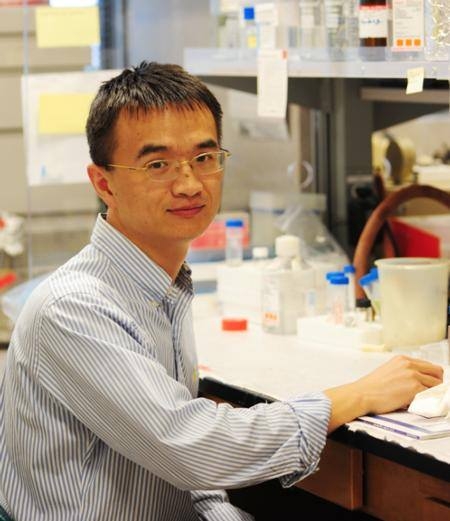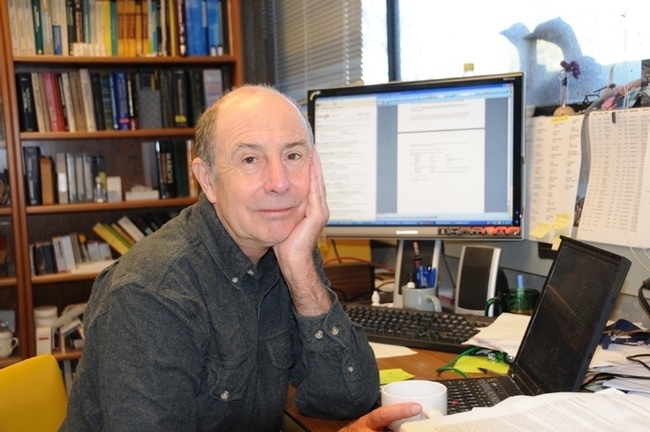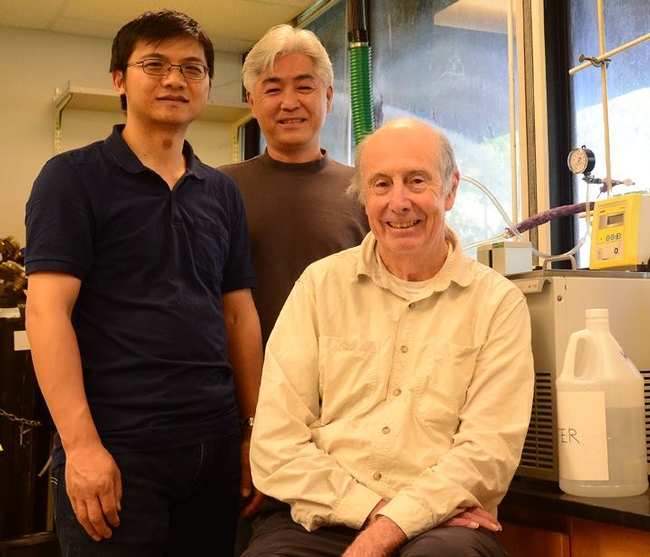
The Hammock lab and the Guodong Zhang lab at the University of Massachusetts published exciting research today (April 30) in the Proceedings of the National Academy of Sciences that involves hope for patients with obesity-enhanced colon cancer.
Their research showed that inhibiting an enzyme, soluble epoxide hydrolase--discovered in the Hammock lab--may reduce the risk of obesity-enhanced colon cancer and may offer a therapeutic target to block and treat colonic inflammation.
Co-first authors Weicang Wang and Jianan Zhang of the Zhang lab, and Jun Yang of the Hammock lab/UC Davis Comprehensive Cancer Center, noted that 30 percent of Americans are obese, and these individuals have a 30 to 60 percent higher risk of developing colon cancer. It is the third most common cancer and the second leading cause of cancer-related deaths in the United States. Colon inflammation is an early symptom of cancer.
“But to date, the mechanisms by which obesity increases cancer risks are not well understood, and there are few effective strategies to prevent obesity-enhanced colon cancer," said Zhang, a former postdoctoral researcher in the Hammock lab and now an assistant professor of food science at UMass where he focuses his research on prevention of colonic inflammation (inflammatory bowel disease) and colon cancer. "Our study showed that soluble epoxide hydrolase and its metabolites are over-expressed in colon of obese mice. In addition, we found that pharmacological inhibition or genetic deletion of soluble epoxide hydrolase (sEH) abolishes obesity-induced inflammation and activation of pro-tumorigenic pathways in colon. These results showed that sEH is an essential enzyme involved in obesity-enhanced colonic inflammation and potentially colon cancer, and pharmacological inhibitors of sEH could be novel agents for prevention of these diseases.”
In the study, the 18-member team investigated the roles of sEH in obesity-induced colonic inflammation, which included using two different sEH inhibitors and a knockout mouse genetically modified not to produce sEH. Results proved similar in all cases.
They further conducted another study in both lean and obese mice with experimentally induced colon inflammation and used molecular analyses to follow a pathway called Wnt. About 90 percent of sporadic colorectal cancers have activating mutations within the Wnt pathway. The team found that obesity increases activation of Wnt signaling in the colon, but it can be abolished by the two different inhibitors and the knockout.
“The sEH inhibitor blocked obesity-induced colon inflammation,” said Hammock. “This worked even for mice on high fat diets.”
“Colon inflammation is highly associated with a variety of diseases and the inflammation often progresses to colon cancer,” Hammock said. “Weicang Wang, Guodong Zhang and co-workers have done a meticulous job investigating the biologically active fats including fatty acid diols that are associated with the inflammation. By blocking the production of these diols they were able to block the inflammation.”
“The study was an exciting discovery from lipidomics technique,” said co-first author Jun Yang. “The consistent results from pharmacologic inhibition and genetic knockout (KO) as well as the signaling pathway mechanistic studies all support sEH as a potential treatment for obesity-induced colon inflammation."
Co-author Jun-Yan Liu is already collecting human samples to extend the study, and Hammock pointed out that they hope that the soluble epoxide hydrolase inhibitor will be in human clinical trials this year.
This work, titled “Lipidomic Profiling Reveals Soluble Epoxide Hydrolase as a Therapeutic Target of Obesity-Induced Colonic Inflammation,” drew grant support from the USDA's National Institute for Food and Agriculture; National Institutes of Health's National Institute of Environmental Health Sciences (NIH/NIEHS); NIEHS Superfund Research Program, and the National Natural Science Foundation of China.
The five UC Davis researchers—Bruce Hammock, Jun Yang, Jia Sun, and Sung Hee Hwang and Debin Wan—are all with the Hammock lab/UC Davis Comprehensive Cancer Center.
The UMass researchers, in addition to those listed above: Yuxin Wang, Wiepeng Qi, Haixia Yang, and Professor Yeonhwa Park, Department of Food Science, Katherine Sanidad, Food Science and Molecular and Cellular Biology Graduate Program, and Professor Daeyoung Kim of the Department of Mathematics and Statistics.
Hammock, a member of the National Academy of Sciences and the National Academy of Inventors, directs two major UC Davis programs; the Superfund Program financed by the National Institute of Environmental Health's National Institute of Environmental Health Sciences (NIH-NIEHS); and the NIH Biotechnology Training Program. He began his career reseaching insect pests but switched to human health issues.
To date, the Hammock laboratory has published almost 900 peer-reviewed papers on the sEH enzyme, discovered while Hammock and Sarjeet Gill (now of UC Riverside) were researching insect developmental biology and green insecticides at UC Berkeley. The work, begun in 1969, led to the discovery that many regulatory molecules are controlled as much by degradation as by biosynthesis, Hammock said. These epoxy fatty acid chemical mediators control blood pressure, fibrosis, immunity, tissue growth, and pain and inflammation.
For many years Gill and Hammock were alone in studying this enzyme but today its importance is well recognized in mammalian biology, with more than 17,000 peer-reviewed papers in the area. Hammock credits the NIEHS for supporting research in this area since the 1970s.
A Davis-based company, EicOsis, has received a large grant from the U.S. National Institutes of Health to move inhibitors to the clinic to treat diabetic neuropathic pain. “We are developing a non-opiate analgesic to treat the chronic pain often associated with diabetes and hope to be in human trials over the next 12 months,” said William Schmidt, vice president of clinical development at EicOsis.
Attached Images:

